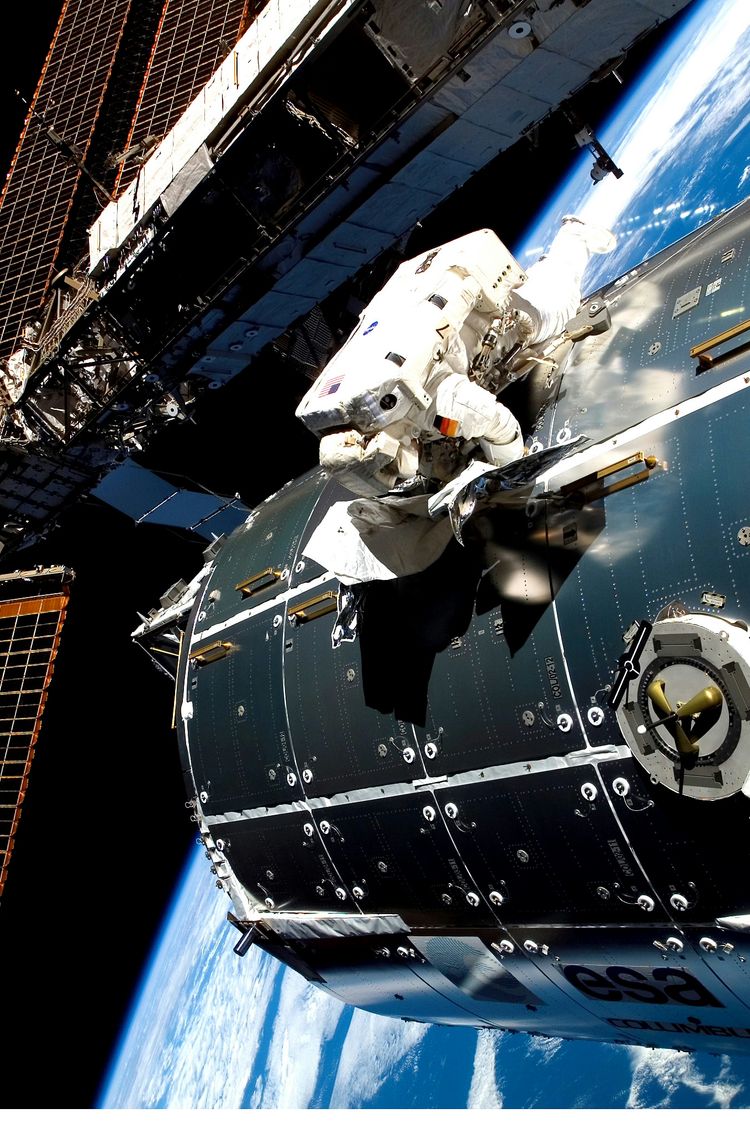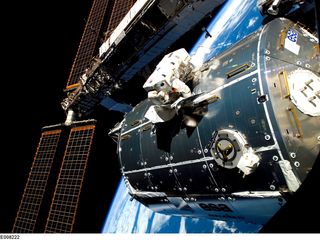Columbus and ATV: One space laboratory, five space crafts and Airbus as prime contractor for ESA is celebrating ten years of success
Noordwijk/Netherlands, 7 February 2018 - Thirty-four years ago, Spacelab was placed in orbit, paving the way for Europe’s human spaceflight programme. It began a legacy of pioneering technology that includes the ATVs, Columbus and the Orion European Service Module.
Spacelab's launch on 28 November 1983 was the first of 22 Spacelab missions involving cutting-edge scientific experiments in fields such as new materials, processing of pharmaceutical products and astronomical observation. An industrial consortium headed by MBB-Erno, one of the predecessors of Airbus built this Europe's first space laboratory.
The beginning of a great friendship
"Looking beyond that launch, let us endeavour to continue to work together in the same spirit of cooperation and mutual support that brought us together today." These words, by NASA administrator James M. Beggs at the welcoming ceremony in the United States following Spacelab's arrival from Europe in 1982, later proved to be prophetic. Although Spacelab was retired in 1998, it was used as the blueprint for Columbus, the laboratory built by Airbus Defence and Space which is now the centerpiece of Europe's contribution to the International Space Station (ISS).
Columbus - a house for cutting-edge research
Columbus is since ten years the first permanent European research facility in space. Since Columbus was docked to the station in 2008 it has been used to perform hundreds of experiments. A major challenge to overcome was the change of the space station's position in 2012 to record a complete rotation of the sun with the SOLAR instruments. It was the first time the ISS had been repositioned to perform a scientific experiment.
ATV - sophisticated space freighter
The five Automated Transfer Vehicles (ATVs) used to ferry more than 31.5 tonnes of supplies to the ISS up until 2015 were also a major success for Airbus. The ATVs demonstrated the ability to dock automatically with the ISS, which is vital technology for future space exploration projects. Airbus achieved this in Europe, without major support from NASA or Russia. With the ATVs, the company became a full partner with NASA on major space programmes.
Humans in deep space
“Spacelab, Columbus and the ATVs have given us the capability to develop a highly reliable, top-quality system that will be crucial to the success of NASA’s exploration missions: the European Service Module of the Orion Multi-Purpose Crew Vehicle,” said Nicolas Chamussy, Head of Space Systems at Airbus.
NASA's Orion spaceship is designed to take humans to the Moon and beyond, with the optional aim of reaching an asteroid and maybe Mars in the 2030s. Airbus is the prime contractor for the European Service Module (ESM). Located below the crew module, it will supply power, propulsion, thermal control, water and air for future manned deep-space missions.
Beyond the shoulder of Orion
The ESM is cylindrical in shape and about four meters in diameter and height. It is characterised by its four-wing solar array (19 meters across when unfurled) typical of the ATVs. The solar panels work on long-duration missions, meaning there is no need to worry about refilling fuel cell systems while travelling through space.
The ESM’s 8.6 tonnes of propellant will power one main engine and 32 smaller thrusters used to perform orbiting manoeuvres and altitude control. Once again, ESA will rely on the experience gained with the ATVs, which successfully used their thrusters to allow the ISS to dodge space debris.
“The requirements for a mission to the Moon are completely different than for travel to the ISS in low Earth orbit. So, we had to change the design of the ATV by integrating, for example, one large main engine providing enough power to go to the Moon and back. For the time being, we will use the refurbished orbital manoeuvre engine from the shuttle programme”, says Nicolas Chamussy.
To the Moon and beyond
In 2019/2020, the Orion capsule will perform an unmanned mission known as Exploration Mission-1, with the aim of travelling 64,000 kilometers beyond the Moon to demonstrate the spacecraft's performance. The first human spaceflight mission, Exploration Mission-2, is expected to launch four astronauts inside Orion in 2023.
When that time comes, it will represent the culmination of the joint efforts heralded by NASA administrator James M. Beggs four decades earlier.
***
About Airbus
Airbus is a global leader in aeronautics, space and related services. In 2016, it generated revenues of € 67 billion and employed a workforce of around 134,000. Airbus offers the most comprehensive range of passenger airliners from 100 to more than 600 seats and business aviation products. Airbus is also a European leader providing tanker, combat, transport and mission aircraft, as well as one of the world’s leading space companies. In helicopters, Airbus provides the most efficient civil and military rotorcraft solutions worldwide.
Your media contacts
Contact us
Ralph Heinrich
AIRBUS | Defence and Space
Francisco Lechón
External Communications - Airbus Space Systems, Spain
Jeremy Close
AIRBUS | Defence and Space
Guilhem Boltz
AIRBUS | Defence and Space

